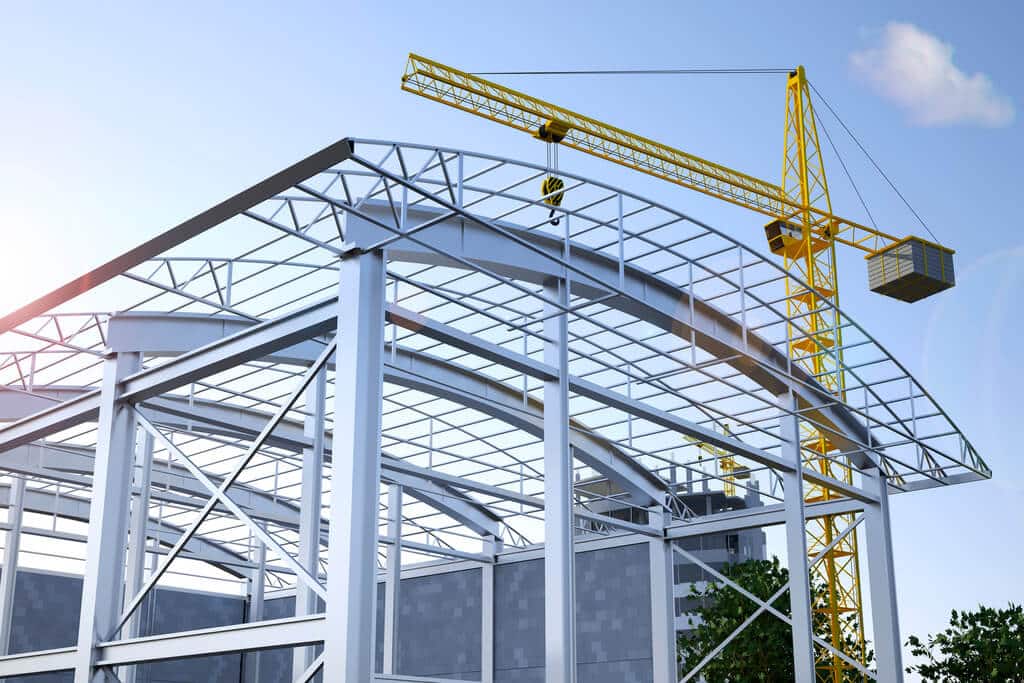Metal has been a significant construction material since the 1700s. It’s an excellent choice for framing and reinforcement in residential, commercial, and industrial structures. Over the years, technological advancements have allowed engineers and expert builders to maximize strength, durability, and function.
Using metal in construction is a popular option for various structures and architectural types due to its versatility and unmatched strength. Unlike other materials, like wood and stone, metal is malleable, allowing customization and easy fabrication to serve different purposes. However, weighing out its advantages and disadvantages is still imperative to set your expectations.
That said, here are the pros and cons of using metal in construction:
The Pros

Metal is an excellent construction material. Many experts prefer it over other options due to the following benefits:
High Strength
Metal is one of the strongest construction materials available today. It can resist high tension and stress without breaking, which is crucial for building earthquake-resistant structures.
Experts test metal by determining its yield and tensile strength. These standards specify the maximum stress metal can withstand before it deforms and breaks. You can dig deeper into the differences between yield and tensile strength to evaluate what qualities you should prioritize on your next construction project.
Durable and Long-Lasting
Durability and longevity are two crucial features of every construction material. It should withstand harsh conditions with minimal to zero damage. Most metals used in construction have these capabilities.
Steel is the most common metal experts use in construction, especially for multilevel buildings and skyscrapers. It can maintain durability for 50 to 100 years, making structures long-lasting.
Lightweight
Weight is vital in structural and construction safety. Experts recommend using lightweight materials to reduce hazards when building in earthquake-prone areas.
Metal is a lightweight construction material. Some excellent examples are steel and aluminum, which have a high strength per unit, reducing the load on the structure. This feature makes metal suitable for building tall towers and bridges.
Long-Span Architecture
Metal is perfect for long-span architecture like bridges, hangars, concert halls, and expansive warehouses. It reduces columns and beams without compromising the overall structural strength, giving architects more design flexibility.
Space-Efficient
Space efficiency is essential to maximizing the usable floor area of a building. Using metal for structural framing reduces the area required for columns. It also eliminates obstructive pillars amidst an expansive structure.
Faster Construction Timeline
Metal fabrication has revolutionized the construction industry. Having these materials prefabricated makes them ready for quick assembly on-site. As a result, builders can reduce the project timeline without compromising quality.
Moreover, metal fabrication has paved the way for innovations like modular houses, prefab steel structures, and fabric buildings. These types of architecture make complete construction possible within a couple of hours or days.
Versatile
Metal’s malleability makes it one of the most versatile construction materials. You can use it for structural support, staircases, railings, room dividers, window and door framing, furnishing, and decor. Metal fabrication allows experts to transform metal into any shape necessary for a project.
Sustainable and Eco-Friendly
Sustainability is critical to modern construction. Metal is a recyclable material. It can maintain all its good qualities for decades, which allows recycling and repurposing through fabrication. This quality helps reduce construction waste and minimize environmental impact.
Sleek Aesthetic
While metal is well-known for its durability, it’s also a designer’s top pick due to its sleek aesthetic quality. Most modern architectures feature fabricated steel and aluminum to achieve the coveted straight lines and edges that make any structure more striking and elegant.
The Cons

Despite offering numerous benefits, using metal in construction also has some downsides. Here are five cons of using metal in construction:
Prone to Corrosion
Typically, metals used in construction are prone to corrosion. Rusting is the primary reason builders avoid using steel when building by the seaside. However, you can prevent rusting by applying a protective coating. One good example is zinc-coated metal roofing, which makes the material weatherproof.
Higher Costs
Using metal in construction increases initial costs, especially when building with rigid metal columns and beams. Aside from the lack of supply, shipment can be more expensive than other materials.
Fireproofing Expenses
Steel is a fire-resistant material. However, it requires a protective coating against heat, which can cause a significant strength reduction. Using metal increases your fireproofing expenses, which are necessary to maintain the material’s durability.
Prone to Buckling
Buckling is one of the risks of using metal columns. It happens when too much stress or load is applied to the material, causing deflection and crack. Experts require an inspection to prevent this issue and maintain structural integrity and safety.
Lack of On-Site Modification
Metals used for construction, especially prefab steel framing, don’t allow on-site modification. When there’s an inconsistency in size or shape, you may need to send it back to the supplier, which may cause a delay. However, this issue is rare since most metal prefab companies perform strict quality checks.
Conclusion
Using metal in construction provides many benefits in terms of durability, flexibility, versatility, and safety. It may require additional expenses and efforts to construct and maintain, but following the standards can help build a structure that transcends time.
To get more information:-

